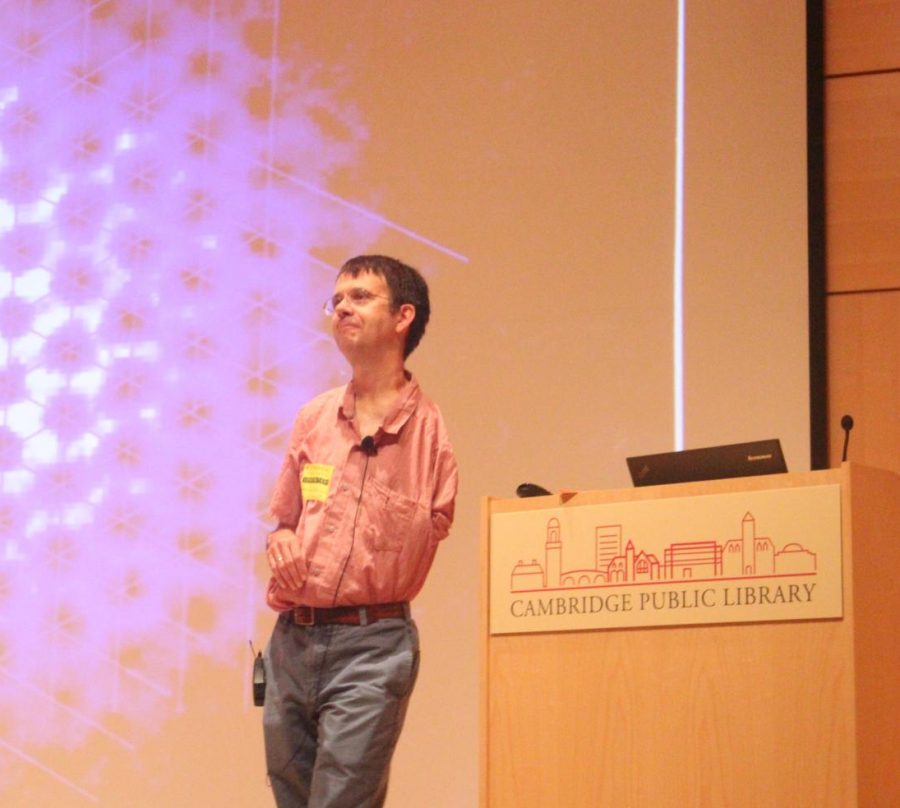Nobel Laureate Eric Cornell Speaks to CRLS Students
Dr. Eric Cornell spoke at the Cambridge Public Library.
October 30, 2017
Nobel laureates are the celebrities of science: They hold the admiration of the scientific community for their work. However, rarely do students—especially high school students—get the opportunity to interact with them. CRLS science students were fortunate to meet one such celebrity when Eric Cornell visited the Cambridge Public Library in mid-September.
Dr. Cornell, a former Rindge student who moved to California before his senior year, explained his groundbreaking research on Bose-Einstein Condensates (BECs) which won him and two others the Nobel Prize in 2001. A BEC is a state of matter that occurs when certain atoms, known as bosonic atoms, are cooled so that they fall to the lowest quantum state (i.e. the lowest possible energy state).
The theory of BECs was developed in a series of exchanges between Indian physicist Satyendra Nath Bose and world renowned physicist Albert Einstein. When cooled nearly to absolute zero, the point at which all motion stops, Bose and Einstein proposed that specific forms of matter known as bosonic matter would condense to one superstate in which distinctions between individual atoms vanish.
However, it would be seventy years until a group of scientists, including Dr. Cornell, would successfully create a Bose-Einstein Condensate. Dr. Cornell first explained the theoretical background behind his research with clever metaphors and simplifications, such as explaining the Heisenberg Uncertainty Principle with the phrase “the more you know about a particle’s momentum, the less you know about its position.”
After his lecture, Dr. Cornell took some time to answer questions from the audience. At one point, he went into the backstory of his missing arm: In 2004, a few years after his Nobel win, Dr. Cornell was diagnosed with necrotizing fasciitis, a flesh eating bacteria. Dr. Cornell’s only option was arm amputation, which occurred while he was in a month-long coma.
He also briefly elaborated on his time at Rindge and his interest in science, saying, “I always knew I was interested in science—I was into building rockets and doing experiments and all—but my physics class at CRLS convinced me I wanted to be a physicist,” he said, also acknowledging Mr. Samp, his now-retired physics teacher, in the audience.
Senior Talia Spitz was especially impressed with the presentation, remarking, “[Dr. Cornell] enraptured the audience and made concepts as complex as superfluids accessible to kids who maybe hadn’t even taken freshman physics yet.”
Dr. Cornell concluded by encouraging all students to engage actively in their science classes and carve out some place for science in their academic careers.
This piece also appears in our October print edition.










